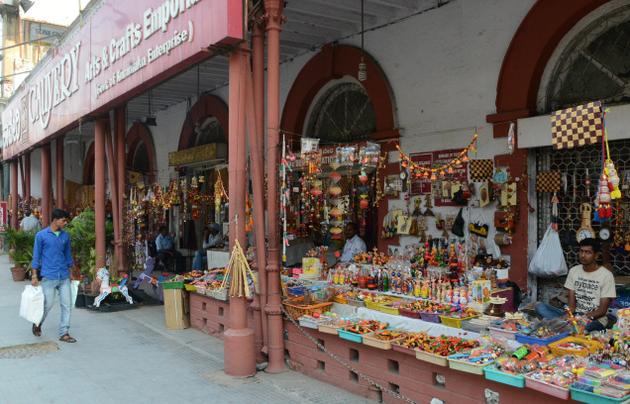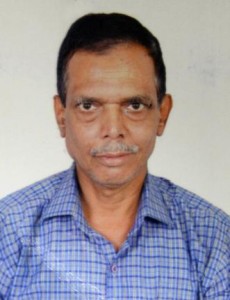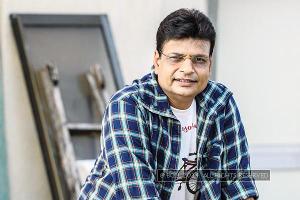Fatehpur Sikri : Revisiting Akbar’s Masterpiece
Lucy Peck , Roli Books, 2014, pp 145, Rs 795
As I flip through the pages of this handy hardcover with its lacy jharokha artwork that recalls the rosy orange sandstone elegance of its subject, my mind rewinds to my own Fatehpur Sikri experience, years back — the ghostly vacant expanse of a Mughal city, a beautiful haunting, desolate oasis of huge stables, green gardens, a musically serene marble mausoleum to a Sufi saint, as well as the high and mighty Buland Darwaza off whose walls boys jumped, for a few paise, into a baoli stepwell all the way below. So it’s been a pleasure to revisit this masterpiece from the 16th century, a period of Renaissance under the relatively benign Mughal, Akbar.
In this new book, architect, conservationist, Mughal-India specialist author Lucy Peck attempts to dispel popular myths that accompany this well-preserved piece of history, the abandoned city of Fatehpur Sikri. The very first page sports an exquisite ‘company’-style painting from 1836, depicting the marble dargah of Sheikh Salim al-Din Chisti, the saint who satisfied Emperor Akbar with the happy prediction of a long-awaited heir (PrinSalim, later to become King Jahangir), and two more to boot. Ironically, this city of victory, an enigmatic, silent, solid, spectator from the past, owes its own birth to the progeny-predicting powers of a Sufi sheikh.
The remaining 130-odd pages are equally satisfactory, glossy and replete with well-researched text, conjectures and surmises, interesting trivia, paintings, maps and excellent photographs, old and new, overall perspectives, as well as close-ups of the designs that grace lintels, awnings, and all the minutiae of mahals adorning a geometrically designed Indo-Persian city.
Peck is on sure ground as she collates information from diverse sources — the skeptical yet informative Muslim cleric Bada’uni, the official biographer Abu’l-Fazl with his Akbarnama and Ain-i-Akbari, Latin memoirist Monserrate — people who lived in Akbar’s court during his reign. Peck also quotes from a few 17th-century European travellers — like Peter Mundy and William Finch. She simultaneously reveals that many travellers’ tales and court records have not survived the centuries.
Unlike historian John Keay, who refers to Fatehpur Sikri as Akbar’s ‘wildest extravaganza and weirdest folly’, Peck is kinder to Akbar. She talks of the ‘romantic enigma’ that was Fatehpur Sikri, a city that was planned and built quickly from 1571 to 1585, and then equally promptly abandoned, as per general belief. Yet, Peck believes ‘that the fable of Fatehpur Sikri’s desertion is misleading’.
The king and his courtiers left, but some ladies of the royal family (including Akbar’s mother) lived on for decades, as did members and descendants of Sheikh Salim Chishti’s family, a few of whom became powerful members of the royal court. In subsequent years, a few became unofficial guides to gullible international travellers who furthered the spread of myths about the city. Lucy Peck attempts to deflate a commonly held myth about water shortage leading to Fatehpur Sikri’s abandonment. She points to the presence of numerous baolis (stepwells), taals and hammams (royal and common baths), as well as the historical reality of later Mughal construction continuing in and around Sikri village that strides a ridge plateau beside a lake (now farmland) formed by the Yamuna basin.
The author transports the reader through Akbar’s world and his times, delineates his character and philosophy personified in his syncretic sect, the Din-i-Ilahi, which was the very touchstone of his own and the new city’s existence. Through his years at Fatehpur Sikri, Akbar became less and less Islamic, more all-encompassing and secular, filling his court with people of diverse faiths.
The visual delight that is Fatehpur Sikri — with its unique architectural specialties like a single central-columned Diwan-i-Khas, the multi-gated three-sided wall, the lesser-known, interestingly named buildings like Samosa Mahal and Tansen’s Biradari — cannot blind one to an important truth: that this city continues to be a holistic experience, traversing the centuries, still speaking to us. And Lucy Peck’s book helps greatly in this process.
source: http://www.deccanherald.com / Deccan Herald / Home> Supplements> Sunday Herald Books / by Lalitha Subramanian / October 19th, 2014













